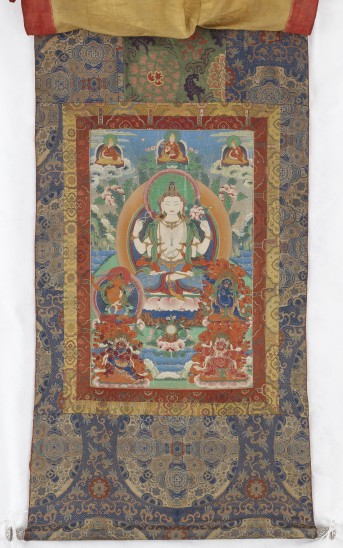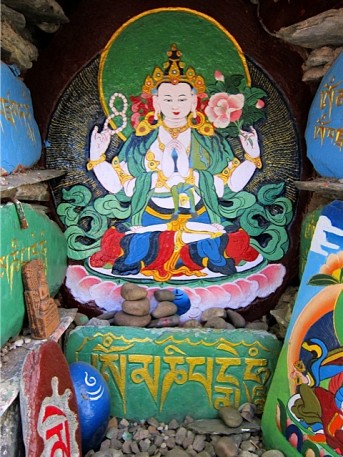Tibet, 14th–15th century; pigment on cloth; 22 1/4 x 18 1/2 in.; The Rubin Museum of Art, New York, C2002.8.1.
Tibetan thangkas such as this one were created to familiarize practitioners with their chosen deity’s iconography. Patrons also commissioned such paintings to help overcome sickness or other troubles. Bhaishajyaguru, or the Medicine Buddha, in the top row suggests the theme of healing in this work. Its highly organized composition also reveals the importance of hierarchy and lineage in Tibetan Buddhist art. Although some of the figures above and beside him might seem to occupy a higher position, Avalokiteshvara, or Chenrezig, is clearly the largest and most important deity in the work. Yet in the right border, a smaller version of the bodhisattva is shown directly below Amitabha, his spiritual father, thus placing him within this buddha’s lineage. EJ






